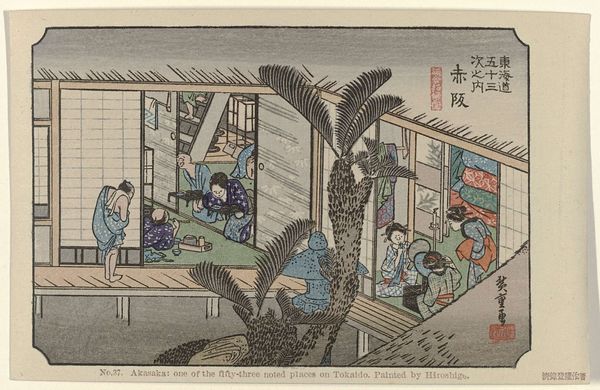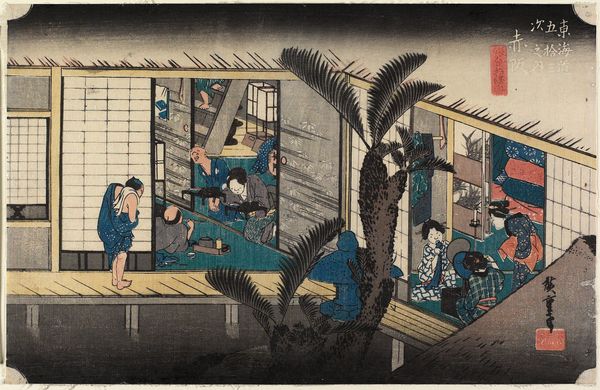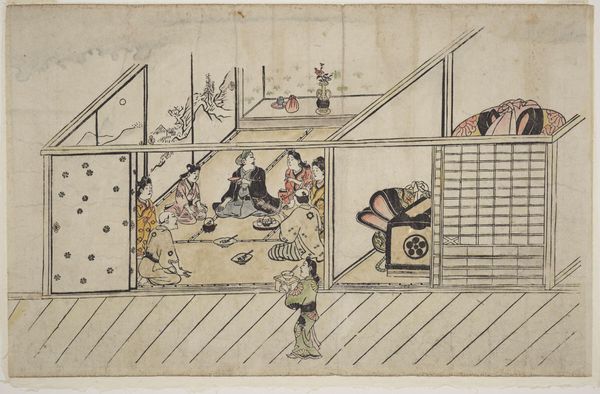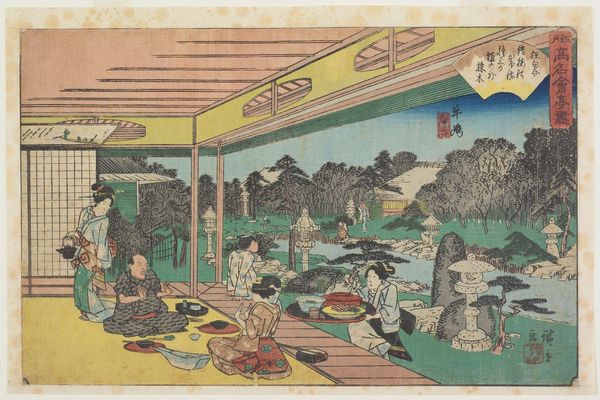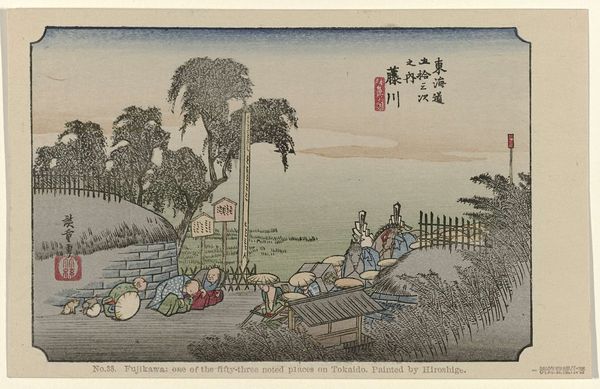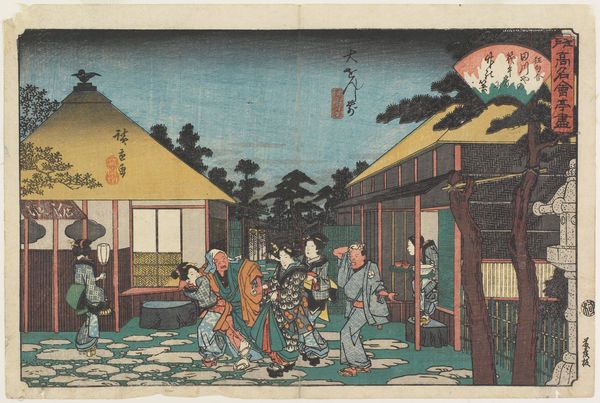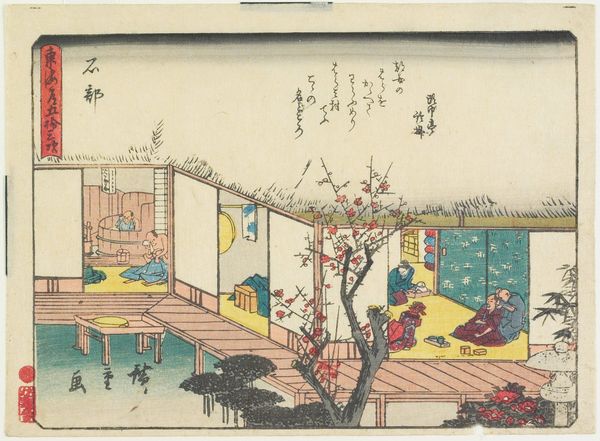
Akasaka--Scene at an Inn with Maids c. 1832 - 1833
0:00
0:00
print, ink, woodblock-print
# print
#
asian-art
#
landscape
#
ukiyo-e
#
ink
#
coloured pencil
#
woodblock-print
#
genre-painting
#
watercolor
Dimensions: 9 1/2 × 14 1/4 in. (24.13 × 36.2 cm) (sheet, horizontal ōban)
Copyright: Public Domain
Curator: This woodblock print, created by Utagawa Hiroshige around 1832-1833, is titled "Akasaka--Scene at an Inn with Maids." Editor: It strikes me immediately as a bustling interior scene, almost voyeuristic, offering glimpses into private moments. The composition is divided by this large tree, almost obscuring and revealing the activity within the inn simultaneously. Curator: Hiroshige was a master of ukiyo-e, and here he captures the social life along the Tokaido Road, a crucial route connecting Edo, modern Tokyo, and Kyoto. Inns like this one were vital spaces. They served not just as places for lodging but also for socializing, conducting business, and exchanging information. Editor: Absolutely, and I'm drawn to the production itself: the woodblock technique allowed for widespread dissemination. Think about the labor involved—the carving, the printing—it democratized art, bringing these everyday scenes to a wider audience than paintings would have. Curator: Precisely. Ukiyo-e prints played a pivotal role in shaping perceptions of Japan both domestically and abroad. They often focused on "pictures of the floating world"— capturing fleeting moments of leisure and everyday life. What do you notice about how class or social roles are displayed? Editor: You can clearly see a hierarchy at play here, through gesture, clothing, and spatial arrangement. Servants attend to guests who are occupied with eating, drinking, writing letters, while another is seen toweling off. It speaks to a complex system of labor and leisure of the period. Curator: There’s a rich historical context there, illustrating how travel and commerce were facilitated in Japan at the time, something like travel hubs or trading points. The art reflects, even contributes to the historical context. Editor: And seeing these processes laid bare gives me so much to think about—the labor and circulation that underpin this image, but beyond the frame the image too. Its success hinged on complex commercial networks, reaching a range of consumers. I really value getting a sense of that hidden system behind artmaking. Curator: It’s enlightening to understand how images of these public places shape our comprehension not only of historical record, but also an understanding of our world as a result. Thanks for pointing that out, I’ve really valued your view of this print.
Comments
No comments
Be the first to comment and join the conversation on the ultimate creative platform.
